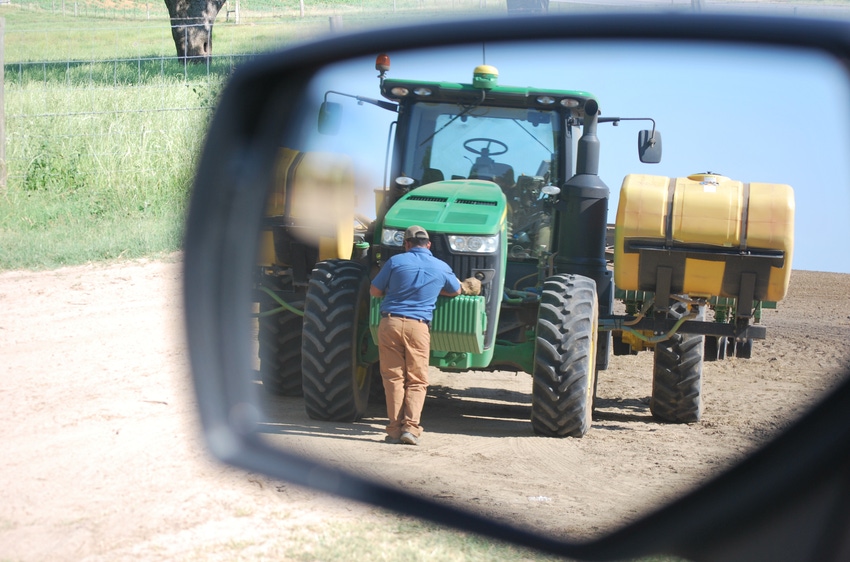
Farming is more dangerous and deadly than police work or fighting fires.
According to a national news story published by Politico April 14, “Farmers are nearly twice as likely to die on the job as police officers are, five times as likely as firefighters, and 73 times as likely as Wall Street bankers.”
The headline accompanying the story ‘Your farm is trying to kill you’ is exaggerated and meant to grab eyes and web clicks. (It got mine.) But despite the hyperbole, the reporter does a good job quantifying and exploring the statistics, focusing on a tragic accident that took place in 2015 at the McCroskey farm in Virginia, very much in the Southeast Farm Press coverage area.
According the story, “Luther McCroskey, 75, had come home from a dental appointment and climbed into a 1979 Long tractor to clear a bit of land. After night fell, his body was found pinned under the flipped tractor on the far side of the hill — one of 401 people to die in farm-related accidents that year.”
Our hearts go out the McCroskey family.
We all know many people who’ve been hurt, near killed or worse on the farm. It’s a truth we know, but it gets pushed to the back of our minds.
Within a few miles of our house, I could introduce you to two farmers and between them they got 13 fingers, three arms and three good hips. On the other hand, I could just as easily introduce you to two farmers completely intact, or at least physically intact.
No matter how careful and tough you are, accidents are going to happen on the farm.
In January, a close member of our family had a bad accident on the farm. An inch or more one way or the other, the accident might have been more than just bad. It still took three months of healing and intense rehabilitation to get back going, but he’s on his way.
Because we are so close to the farm, we might get complacent to its dangers. That’s human nature. But when I see a non-farm establishment like Politico do a story about the physical risks of farming, I’m able to pull back from the farm and refocus my eyes to the risks.
Though the story does a good job relaying the dangers of farming, it also suggests not much is being done to change things, or do things to make farming less dangerous. This insinuation is a stretch too far and shortsighted.
Fortunately, the evolution of equipment manufacturing and engineering has led in recent decades to much safer tools on farms, and the safety of all workers on the farm is much improved compared to times past, a blessing of technology and people’s efforts to make things safer.
Because of the inherent dangers of farming, some may call for more oversight or regulations to enhance safety on farms because some people like things to be regulated and over sought, but we don’t need any more regulations or oversight on farms. Safety is a muscle farmers can flex without some outside person telling them how to do it. But with that analogy, working safe is kind of like working a muscle: the more you work it, the stronger and more pliable it becomes. Be as careful as you can and help others on the farm be as careful as they can, too.
Take care, good luck and thanks for reading.
Some stats to chew on. According to the Centers for Disease Control and Prevention:
Approximately 1,854,000 full-time workers were employed in production agriculture in the US in 2012.
Approximately 1.4 to 2.1 million hired crop workers are employed annually on crop farms in the US.
An estimated 955,000 youth under 20 years of age resided on farms in 2012, with about 472,000 youth performing farm work. In addition to the youth who live on farms, an estimated 259,000 youth were hired to work on US farms in 2012.
In 2012, 374 farmers and farm workers died from a work-related injury, resulting in a fatality rate of 20.2 deaths per 100,000 workers. Tractor overturns were the leading cause of death for these farmers and farm workers.
The most effective way to prevent tractor overturn deaths is the use of a Roll-Over Protective Structure (ROPS). In 2012, 59% of tractors used on farms in the US were equipped with ROPS. If ROPS were placed on all tractors used on US farms manufactured since the mid-1960’s, the prevalence of ROPS-equipped tractors could be increased to over 80 percent.
On average, 113 youth less than 20 years of age die annually from farm-related injuries (1995 -2002), with most of these deaths occurring to youth 16-19 years of age (34 percent).
Of the leading sources of fatal injuries to youth, 23 percent involved machinery (including tractors), 19 percent involved motor vehicles (including ATVs), and 16 percent were due to drowning.
About the Author(s)
You May Also Like






